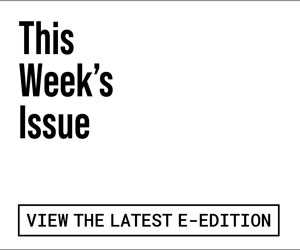Saxophonist John Handy cut his jazz teeth as a teenager at Bop City in San Francisco, sitting in with men often twice his age, including members of Duke Ellington’s and Lionel Hampton’s bands. One night while playing “You Go to My Head,” Handy recalls, he turned around to discover that “God” himself — Art Tatum — had taken over the piano. “I was able to hold my own,” Handy boasts. “I was never kicked out of a session.”
But it was back in Oakland — where he’d moved from Dallas in 1948 with his mother and sister — that Handy buttered his bread by blowing the blues with such early R&B stars as Lowell Fulson, Roy Hawkins, Pee Wee Crayton, and Little Willie Littlefield. Although alto sax was Handy’s instrument of choice, he also owned both a tenor and a baritone because they made him more in demand for the blues gigs that paid the rent.
“I really preferred playing the jazz gigs; they were much more challenging,” the 68-year-old musician admits as he sits on the deck above the swimming pool at his home in the East Oakland hills, where he moved three years ago after spending most of his adult life in San Francisco.
Handy is headlining a concert Sunday afternoon in downtown Oakland at Frank H. Ogawa Plaza as part of the city’s two-day, free Art & Soul Festival. He and his jazz group are slated to go on at 4:30 p.m., following a set by Oakland blues titan Jimmy McCracklin. (For more information on Art & Soul, go to www.oaklandculturalarts.org or phone 510-238-7402.)
The last time Handy and McCracklin appeared on the same stage was in 1958 in San Jose when the saxophonist was hired to play baritone with the famous bluesman’s band. “There were several horns, and we were swaying back and forth,” Handy remembers. “I sold my baritone the next day so I wouldn’t get another call for it. It wasn’t that the music was hard; I was just totally disinterested.”
By that time, Handy had his sights set on breaking into the major leagues of jazz. Within a few months, he relocated to New York City and landed a job with pianist Randy Weston. Another gig with bassist Charles Mingus soon followed, and although it lasted only a few months, it brought Handy the first major critical acclaim for his unique alto style, which is marked by a searing tone and uncanny command of the horn’s upper register.
Handy — who had an R&B hit in 1976 with the tune “Hard Work” but for the past two decades has played largely straight-ahead in a band billed as “John Handy with Class” — continues to follow his own creative muse. “I want to play more modal things, like the Indian ragas,” he says. “It makes the rhythm a lot more flexible, where you can do things and everybody can kinda follow what I think is much more of a natural inclination toward how music is played internationally, rather than playing Western-style, where we’re just totally bogged down with chord progressions running all over the place. I’d like to get rid of some of those hurdles that aren’t necessary to play wonderful music.”
fter programming his third Film Noir Fest at Oakland’s Parkway Theater, Will Viharo has finally made peace with the fact that a sizable percentage of his audience is new to the dark glories of the genre. That’s why he continues to put newer noirs such as Angel Heart and well-worn classics like The Maltese Falcon on the bill — to draw in curious beginners.
“I’ll give ’em Body Heat and Red Rock West,” says Viharo, referring to Lawrence Kasdan’s 1981 Kathleen Turner/William Hurt/ Mickey Rourke neo-noir and John Dahl’s 1993 Nicolas Cage/Lara Flynn Boyle double-crossing contest. “It’s different than Thrillville [Viharo’s cult-and-weirdo nights at the Parkway], when I sucker-punch ’em with the strong stuff.”
The trick in presenting noir in 2001 is to break the gloom and desperation of that peculiar brand of Hollywood morbidesse to prospective fans gently, with a comparatively recent film such as Carl Franklin’s Devil in a Blue Dress (1995) starring Denzel Washington — and then move on to the more challenging material. Says Viharo: “A surprising number of people have never seen The Maltese Falcon. They may see Body Heat and never realize it’s based on film noir. I’m programming to lure them into the more interesting and obscure films, the ones I really like.” Those would be such comparative rarities as Sam Fuller’s LA actioner The Crimson Kimono, John Huston’s notoriously ad-libbed Beat the Devil, Stanley Kubrick’s early low-budget Killer’s Kiss, and Irving Lerner’s Murder by Contract, the story of a hit man named Claude.
As in last year’s noir-a-thon, author and noir nabob Eddie Muller will appear, offering commentary on the type of strong female roles he talks about in his new book, Dark City Dames (Regan Books/HarperCollins, $29.95), a prime example of which is Audrey Totter’s exclamatory sultriness — in a scene about a minute long — in The Postman Always Rings Twice.











